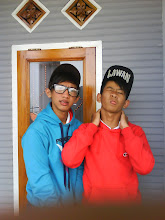What is Hardcore?:
Fast, loud and furious – these are the elements of hardcore. From its inception in the late ‘70s, hardcore began to pick up the attitudes and messages employed by the first punk bands, setting them to driving guitar and drum lines that were more frenzied than those played by earlier bands that fell under the punk description. Faster and heavier than other contemporary punk bands, hardcore songs were often very short and very frenzied.
The Early Days of Hardcore:
At the beginning, hardcore punk was primarily a phenomenon in the states. Hardcore punk's rise to popularity in the late '70s and early '80s happened in multiple cities throughout the U.S. almost simultaneously. Musicians that had been raised on heavy metal but were being influenced by punk were taking these two influences, combining them, and speeding them up into something exciting and unheard of.
At the same time, on opposite coasts, three bands help usher in the era of hardcore. LA's Black Flag and Washington DC's Minor Threat and Bad Brains were the primary pioneers of the hardcore sound, which also ushered in the era of slamdancing at punk rock shows. While it had been around for a while at punk rock shows, the intensity of hardcore music really brought it into prominence.
Hardcore Breaks Out:
With the birth of these early scenes came a DIY ethic that allowed hardcore scenes to pop up all over. The Midwest was especially dense; In Detroit, Negative iApproach ruled the roost, in Lansing, Michigan, the Meatmen started a scene, and Minneapolis-St. Paul spawned the amazingly complex Husker Du, who mixed jazz, psychedelia, acoustic folk and pop in with their hardcore riffs.
It was true everywhere, though. Nevada had 7Seconds. New Jesey had the Misfits. Gang Green was raging in Boston. And New York was putting hardcore shows on by the Beastie Boys, a hardcore band that would later be better known as a rap outfit. Once the sound began, it was impossible to put a lid on it. Essentially, any city or town large enough to have a scene seemed to have a hardcore scene, with its own chunk of local hardcore bands and local hardcore followers. This continues to be the case, and while it was (and continues to be) primarily popular in the U.S., hardcore scenes are evident all over the world.
Hardcore Shows:
While hardcore records are obviously an essential part of hardcore music, and without them we’d have no recorded history of the music, hardcore music and its encompassing scene was and is really about the hardcore show, where all of the DIY ethic comes together. Even now, hardcore house and club shows happen everywhere, with bands getting together to play out of basements and garages, selling self-recorded music and handmade t-shirts, and advertised by self-produced fliers.
Hardcore In The Mainstream Media:
From the early days, hardcore shows were misunderstood as violent affairs by the mainstream media. TV talk shows grabbed onto these shows as violent affairs, and TV dramas depicted them as dark violent events. The most famous is arguably
the punk episode of Quincy M.E., which has spawned its own pop references in the punk scene, including a song and band name.
A Message?:
Hardcore music's only unifying factor is its sound. The lyrics and messages vary from band to band. While some hardcore bands preach drug- and alcohol-free living (known as
straightedge), other bands write songs that are all about partying. There are even Christian hardcore bands with a strong religious message.
What's Next?:
Hardcore continues to be a subgenre of music with a strong following. While it paved the way for thrash metal and other heavy sounds, many of the early hardcore bands are still together and new bands rise up constantly. Along with the continuing tide of hardcore is a wave of bands known as bands, but that’s another story entirely.



 RSS Feed
RSS Feed Twitter
Twitter






